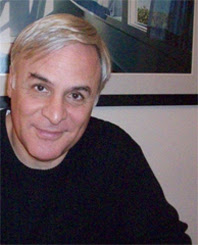 In my opinion, I’m very concerned about the way the SCE/CEP was set up and the direction the leadership of SCE/CEP is now taking us. Instead of taking the neutral position and uncovering and observing the evidence as presented they consistently and obviously put a positive spin on it. Everything is fine and SCE is doing the best job possible.
In my opinion, I’m very concerned about the way the SCE/CEP was set up and the direction the leadership of SCE/CEP is now taking us. Instead of taking the neutral position and uncovering and observing the evidence as presented they consistently and obviously put a positive spin on it. Everything is fine and SCE is doing the best job possible.- We must ask ourselves does this repeated positive spin serve the public interest? In my opinion No.
- Is this Community Engagement Panel doing the best job possible to protect the safety of our communities and California? In my opinion we are not.
- Can or will the SCE/CEP make the changes necessary in its charter to become an effective and strong safety advocate for the decommissioning and safe storage of nuclear waste at San Onofre that the people of California deserve until such time as the DOE takes possession of this long-term problem? In my opinion that is still up in the air.
To this point SCE’s attempt to be inclusive and transparent clearly has it’s limits. While asking me and others to bring up the safety concerns of the local citizens, SCE and the SCE/CEP leadership has then glossed over them, seeing these concerns only to be checked off their list one by one. Example; Tim Brown told the CA Senate Energy, Utilities and Communications Committee on Aug 12, 2014 that local concerns have be heard and addressed. Implying some sort of conclusion or satisfaction by all with SCE’s predestined decommissioning plan. Link for Senate hearing http://youtu.be/_q6YulhHpcU?t=1h2m9s starting time for Tim Brown 1:02:10 to 1:17:45. Nothing of course could be further from the truth for many in our local communities. SCE, Inclusiveness is not just a tool to be used on the “Yellow Brick Road to decommissioning”, we are not in the Land of Oz after all. We are however in the backyards of over 8.4 million Californians. SCE and its CEP leadership now have a consistent record of spinning information to fit the SCE agenda. For example, regarding “defense in depth”, the chairman, after being concerned at first at the lack of defense in depth for dry cask long-term storage, concluded after his ‘”careful research”, that citizen activists had not asked about ” defense in depth” for waste storage before and that the nuclear industry and the NRC has done a poor job in defining and getting the word out about “defense in depth” for nuclear waste and dry cask storage. Citing “defense in depth” as cladding on fuel rods, ceramics on the fuel pellets , even the 5/8″ thickness of the canister itself and concrete overpack of the casks as if these were “defense in depth” that were unspoken of in the past. And he was right they were not spoken of in the past as “defense in depth” because they were not considered nor should we consider them today as “defense in depth”. While these have some small measure of defense, they are not in anyway sufficient or adequate for long-term storage of nuclear waste within a heavily populated area like Southern California, and everyone in this nuclear industry knows the calculated risk they are betting on with California’s future.
David Victor’s report Safety of Long-term storage in casks: Issues For San Onofre Dec 9, 2014 does have some items we do agree on: “It is likely that spent fuel will be stored in dry casks at the San Onofre nuclear site for very long periods of time—most likely well beyond the 20-‐year period for initial licensing of the casks.” page 2 of report. “Some elements of what will be needed for “defense in depth” are not yet fully in existence—for example, actual equipment that would allow removal of fuel from a cask without an onsite pool has been designed and a prototype was demonstrated in the 1990s, but no such full scale commercial system currently exists. Similarly, full-‐blown procedures for repairing all forms of cask cracking are not yet fully certified” page 4 of report. Other than these items there is not much here other than “pro nuclear industry spin.” Read full report at:https://docs.google.com/document/d/13DurWxC8l3l_VCNEGXz5bg0V4FJteepR7LVuUjPz4Xk/edit?usp=sharing
Related articles
 Fukushima Clean-Up Based On Shady Science And Tax Payer Rip-Off
Fukushima Clean-Up Based On Shady Science And Tax Payer Rip-Off Where will all our nuclear waste go? Disposal is at a critical stage, feds say
Where will all our nuclear waste go? Disposal is at a critical stage, feds say State Approves $3.3 Billion Settlement to Close San Onofre
State Approves $3.3 Billion Settlement to Close San Onofre Plan divides billions in closed nuke plant costs
Plan divides billions in closed nuke plant costs Consumers to pay $3.3 billion in deal to divide costs from closed San Onofre nuclear plant
Consumers to pay $3.3 billion in deal to divide costs from closed San Onofre nuclear plant Ratepayers file suit over San Onofre nuclear plant
Ratepayers file suit over San Onofre nuclear plant
Aging Nuke Dumps On Fault Lines In Tsunami Hazard Zones = Fukushimas… Any Questions?
PLEASE Turn off a light for Fukushima USA / San Onofre
PLEASE Turn off a light for Fukushima USA / San Onofre









